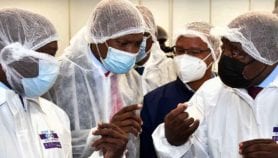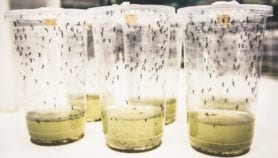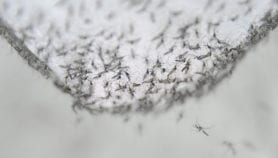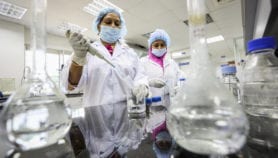Send to a friend
The details you provide on this page will not be used to send unsolicited email, and will not be sold to a 3rd party. See privacy policy.
International rules drawn up for genetically modified (GM) crops must be altered as soon as possible to deal with GM insects that will start emerging from labs soon, according to a researcher.
While the 2003 Cartagena Protocol on Biosafety — an international agreement to protect biodiversity from the risks of GM organisms (GMOs) — also applies to GM mosquitoes, it was formulated with GM crops in mind, said John Marshall, researcher at Imperial College London, United Kingdom, in a letter in the September issue of Nature Biotechnology, ahead of a major biosafety meeting next week (11–15 October).
"People have long been avoiding these serious issues because it’s not clear how to address them," Marshall told SciDev.Net. "The sooner [the discussion starts] the better — international regulatory documents can take a long time to be approved."
A number of strategies to use GM mosquitoes to control diseases such as malaria and dengue are in the pipeline.
‘Self limiting’ strategies, such as releasing sterile male mosquitoes, are much closer to being used than those that aim to spread, or ‘drive’, disease-resistant genes through wild populations (the ‘gene drive’ mechanisms), which will probably need another decade of research to reach field trials.
A working group charged with developing risk assessment guidelines for GM mosquitoes will present its report to the 5th Meeting of the Parties to the Cartagena Protocol on Biosafety, in Nagoya, Japan.
The report deals with the risks of releasing GM mosquitoes and recommendations on how to handle those risks. But, whilst it adequately covers the risks of ‘self limiting’ strategies, said Marshall, ‘gene drive’ mechanisms raise many other unique concerns.
For example, the current protocol bans the release of GMOs that are likely to cross the border of the country which is planning to release them. This makes "the release of self-sustaining mosquitoes impossible", said Marshall.
Also, currently GM companies are not required to perform a risk assessment for GMOs in transit or destined for contained use, leaving "inadequate protection" from accidental release during transport to field trials, said Marshall.
This omission also prevents the country in which outdoor field trials take place from asking for a risk assessment from a country where GMOs originate.
"The question is whether it would be possible to amend the Cartagena Protocol so that it applies to GM mosquitoes and all of their unique biosafety concerns or whether a different regulatory structure is required," said Marshall.
Ricarda Steinbrecher, co-director of EcoNexus, a UK-based non-profit science watchdog, said that even the self-limiting strategies raise many biosafety concerns, and that there is an urgent need to discuss issues related to GMOs crossing national boundaries.
But Anthony James, a molecular geneticist at the University of California, Irvine, United States, said that these issues are already being discussed. "People have thought about cross-border issues. The WHO-TDR (Special Programme for Research and Training in Tropical Diseases) has a working group coming up with guidelines. I know they’ve been interacting with people involved in the Cartagena Protocol."
He added that the science in this area is young and the WHO-TDR documents probably were not ready to feed into the preparation for next week’s meeting. "The issue will probably be on the agenda for the next round of meetings," he said.













